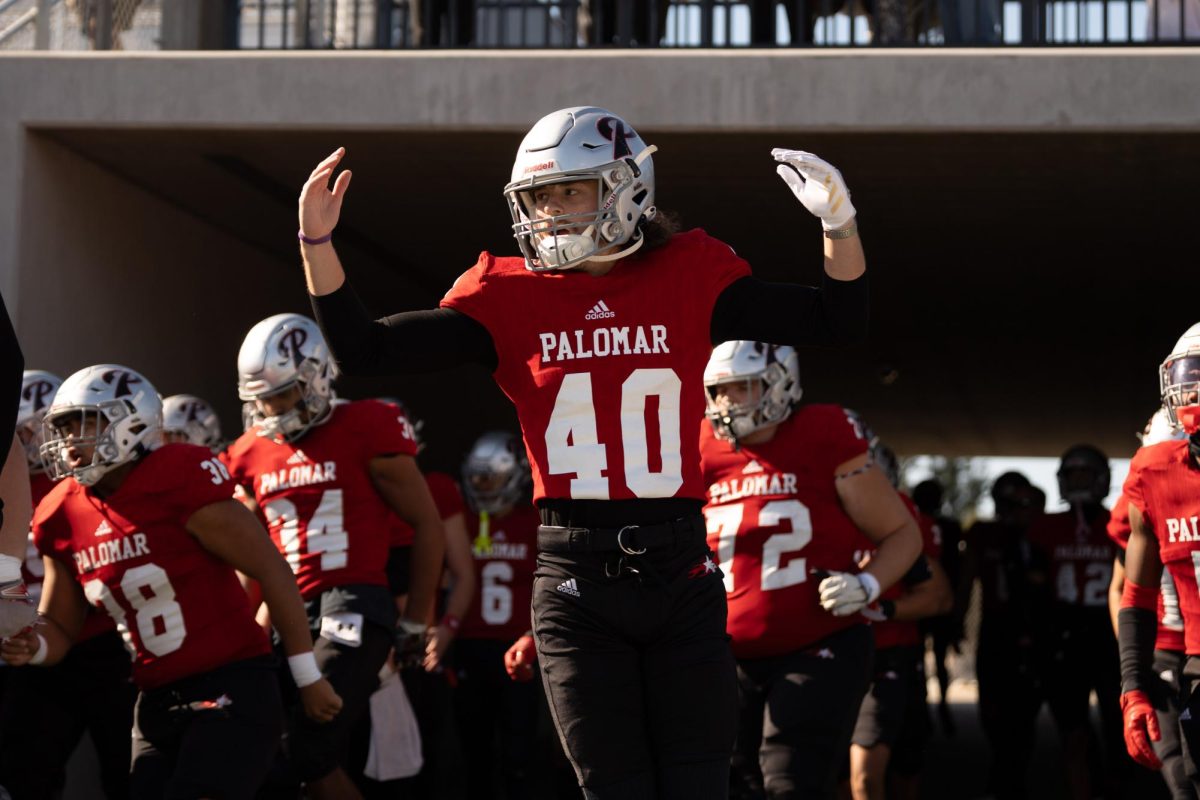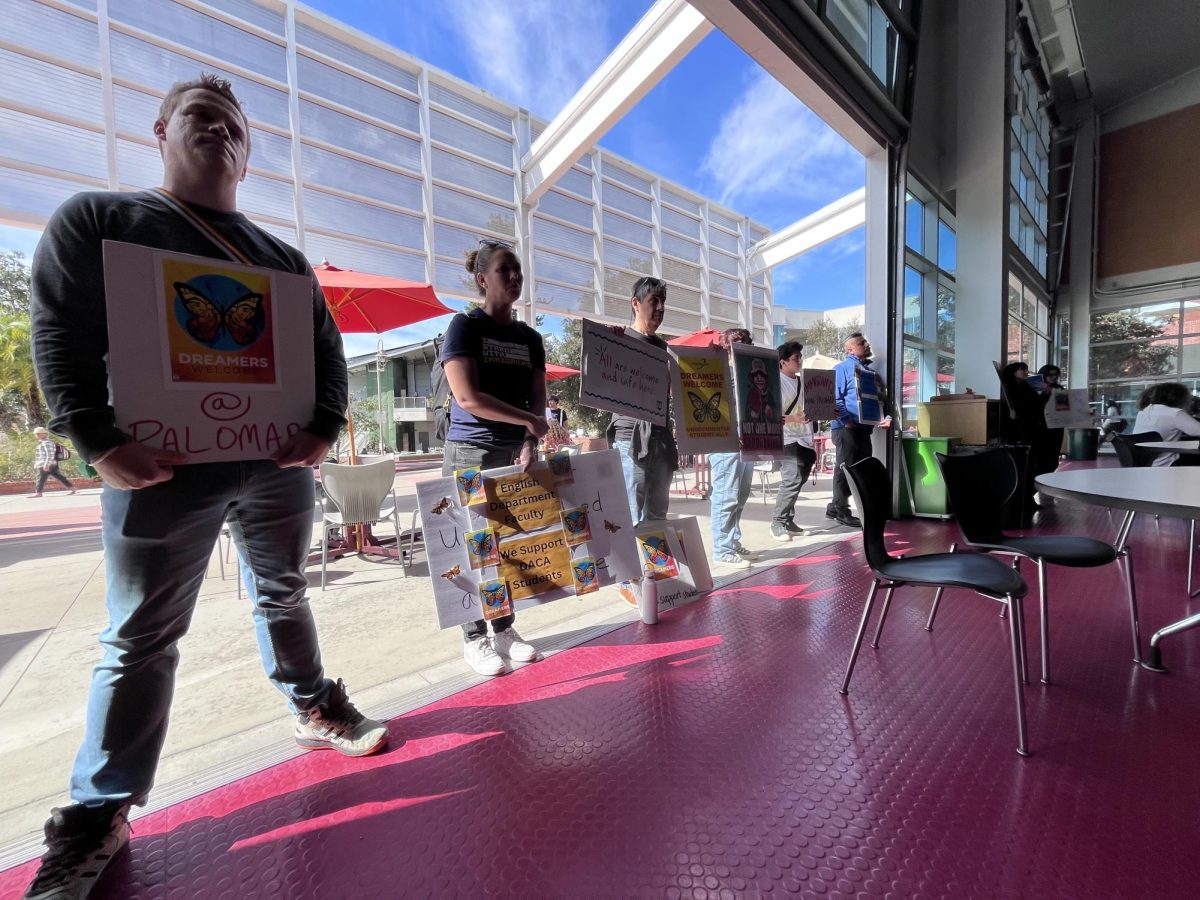Facing social changes and divisive public perception, the police are faced with change.
It’s no secret that police departments and police officers across the nation are currently having to navigate uncharted waters regarding how they operate. Terms like “use of force” and “excessive force” have become a part of the American vocabulary in recent years. And due to a growing lack of confidence in police officers across the nation, the police are faced with a need to change. This need for a change in how the police conduct themselves has been felt everywhere, even at colleges.
Now more than ever, public perception as well as community engagement has been at the forefront of many departments’ minds. Because in a world of active-shooter threats and police brutality, students and civilians are asking the question of what purpose do police serve?

For Palomar Police Department, “relationship-based policing,” as Chief Chris Moore calls it, is a big part of what they do at Palomar. Which for them means getting to know the people that they serve and protect through outreach events like Coffee With a Cop and working with student organizations.
“We’re the nice police, we wave to you, we walk through workstations, check in and see how people are doing. And what that does is, it begins to cultivate trust,” said Chief Moore.
Trust is a big concern for everyone at Palomar PD, because they’re not serving an entire city or county. They see their community members every day when they’re on campus, so building trust and confidence is a crucial part of their work.
“Early in my career here, there were some staff that didn’t even know that there was a police department [here] and that goes back to doing community outreach… Building that relationship with them is imperative to our profession here, especially in the college environment,” said Sergeant Jesus Montes.
“I used to joke around that early in my career they would only wave at us with one finger only, and now it’s all five fingers,” said Sergeant Montes.
“Relationship-based policing” is something that every officer in Palomar PD is a part of, not just the leadership. For them, it’s what sets Palomar PD apart from any other police department, especially those that operate on a city or county-wide level. They have the time to get to know the people they interact with.

“That’s the benefit of working here compared to like going call to call to call to call, where you know you just don’t have time to help people. And that’s why I wanted to do the job in the first place is to help people,” said Officer Stephen Wilson.
And because Palomar PD can’t be everywhere at all times, they want the community at Palomar to feel comfortable letting them know where they might need to be.
“If they [the community] have an employee or student that they have an issue off-campus, they can bring that to us to make sure that they’re protected, and that the campus is protected. And the other part of that is, if they see something wrong or that they’re concerned about, that they don’t hesitate to tell us about it,” said Chief Moore.
Safety is another crucial part of Palomar PD’s job. Just about everyone in the U.S. is constantly aware of a shooting occurring at any time when they are out in public. According to a Gallup poll taken in 2022, only around 45% of the Americans surveyed were confident in the police, which is indicative of a downward trend of trust in the police.
Because even in a place of learning like Palomar, multiple students who were interviewed for this story were concerned about an active shooter threat. Many did not know how well-trained or equipped Palomar PD is for the possibility of an active shooter.
The students interviewed preferred to have only their first names in the story for privacy reasons.
“I feel unsafe knowing that a shooting can happen at any moment and the only people that are armed may be roaming far away from the class or in the police department. I don’t have much of a choice, but I’m complacent,” said David, a student at Palomar.
The threat of an active shooter is something the Palomar PD trains for. They train for a multitude of close-quarters combat (CQC) scenarios, including what to do if a shooter is wearing body armor. They also work with a SWAT trainer and different agencies multiple times a year to stay up to date with tactics and even precision shooting to combat potential threats.

But the concerns that many students have regarding their safety and the ability of police officers isn’t totally unfounded. Cases like the shootings in Parkland, Florida and Uvalde, Texas are examples of police officers not handling an active shooter appropriately. Chief Moore was openly critical of the officers at the Uvalde shooting for failing to deal with the threat despite having hundreds of officers on the scene. These errors in other departments’ actions are something that Palomar PD is aware of and has adjusted its policy and tactics to stay on top of.
Palomar PD employs a “single officer” deployment method. This means that officers are instructed to respond to a threat and handle it as it happens rather than waiting for backup.
“You can’t wait when there’s a shooter on campus. You can’t wait as a police officer. So, the first officer there, they will go [and do] what we call ‘direct a threat.’ And that’s how we train. When that SWAT trainer comes out, we often work in pairs but we’re also mindful of what the single expectation is… I would say that’s what the best practice is probably in the county and most western law enforcement, is the single officer response,” said Chief Moore.
Another big question that had to be answered was, do the students at Palomar feel safe and do they feel like Palomar PD does a good job of keeping them safe? Do students feel that they can trust Palomar Police officers with their safety? It’s a mixed bag.
“When I’m on campus, I usually see a few police officers walking around and checking how things are. It’s always enough to feel reassured but it’s never too much cops to the point where I get worried something is going to happen,” said Brenda, a student at Palomar. “I’d be very willing to leave my safety in their hands. I don’t have any doubts.”
Another Palomar student, Magaly, said that she felt safe on campus when there were other people around. But when asked if she felt safe around Palomar Police officers she said, “The only time I see Palomar Police officers are when they are in the patrol cars. I’ve never walked near an officer. Them being in their car just feels somewhat hostile for some reason.”
“They never seem friendly either, which may not be part of their job, but as a student, we should feel that we can go up to an officer. I don’t feel that I can,” said Magaly.
Palomar student Brenden said, “In the event of an intruder in the school I really have no other option than to leave my safety to the Palomar Police, but if I was having a sort of dispute with another student, I would head to administration before the police.” They also referred to an incident where they felt that Palomar PD had not done their job properly.
“My car doesn’t feel safe, I’ve had my license plate stolen on campus and I had to pay for a ticket when the plate was stolen because my car didn’t appear in their system. I paid to be the victim of a crime,” said Brenden.
Another question to be answered was how far Palomar Police officers are willing to go to keep the students and faculty safe? Because not every police officer would be willing to go on the record and pledge to put the lives of their constituents above their own and protect them.
“I feel comfortable in that. Because the people that are here chose the school. And over the last 25 years, that’s what happens at schools, that’s why schools have police departments, that’s why we have school resource officers. I feel confident in that, in the past they may have had just intention, but now we have intention plus training plus repetition,” said Chief Moore.








































































